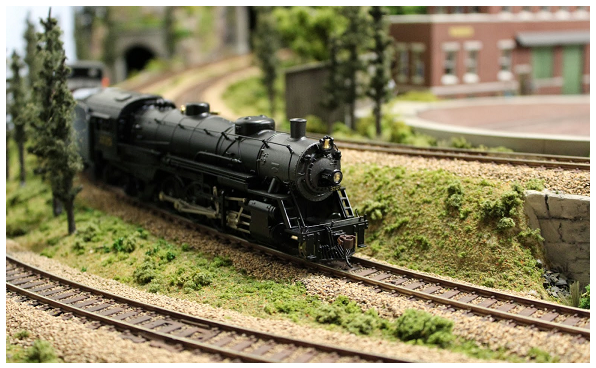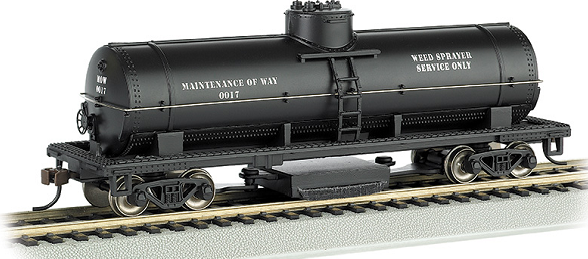Beginner's Guide to Model Railroading
Cleaning Your Tracks

The most important reason for cleaning model train railroad tracks is to ensure that efficient and effective power is available to operate your locomotives. What kind of power provides the energy required to run your locomotives? Electrical power!
The electricity from your home wall socket flows to the model train power pack; from the power pack, it flows through the rails of your track layout. The wheels of your locomotive are made of metal. Metal is a conductor of electric current. The contact of the locomotive's wheels against the rails create a circuit that allows the electric current to power up the electric motor inside the locomotive. When the electric current flows freely, the locomotive runs efficiently.
Dirty tracks impede (interfere) with an efficient flow of electrical current. Dirt, debris, or other non-conducting particles that get between the rails and the contact points of the locomotive's wheels create resistance (opposition to current flow). Thus, dirty rails fail to provide the locomotive with efficient energy for effective operation. Over time, this can cause the locomotive's motor to fail.
Best Track-Cleaning Methods
Dirt, Debris or Other Particles on the TracksClean the tracks with a soft cloth slightly dampened with 70% solution Isopropol Alcohol or track cleaning fluid that may be purchased in hobby shops or online. Lightly wipe the cloth over the tracks to clean the surfaces.
An easy remedy for cleaning your tracks, and keeping them clean on a regular basis, is to purchase a track cleaning car like the one illustrated below. Notice the cleaning pad at the bottom of the car. The car is filled with a track cleaning compund. As it moves along the track, the moistened pads clean the rails. Once every couple of months, attach the car to your locomotive and run it along all the tracks on your model railroading layout.

Dirt, Debris or Other Particles on the Wheels of Locomotives and Rolling Stock
Using a cotton swab like a Q-tip, moisten the tip of the swap in a cleaning solution and rub the swap around the wheels (especially the flat surfaces that make contact with the rails).
Remember: clean tracks result in efficient operation of your locomotives; dirty tracks inhibit efficient operation and results in poor performance.
Continue with this Railroading Workshop by clicking on the link below.
Straight and Curved Track